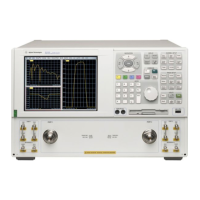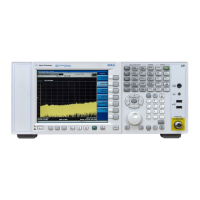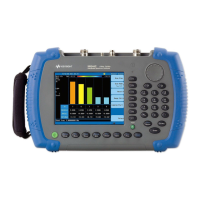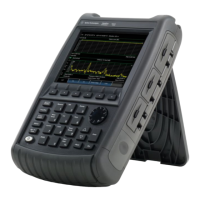182 Chapter 3
Mode
One Port Insertion Loss Measurement
Mode
One Port Insertion Loss Measurement
One Port Insertion Loss measurement Description
The one port insertion loss measurement allows you to quantify signal loss in a cable or
other device without connecting both ends of the cable or device to the test set. This
measurement can be especially useful in measuring the loss of a feedline connected to the
antenna on a tower. This method of measuring antenna feedline insertion loss is accurate
for results up to 10 dB.
This measurement is less accurate than Two Port Insertion Loss. When it is not practical
to connect both ends of a device to the test set or for insertion loss measurements greater
than 10 dB — for example when measuring a 40 dB high power attenuator — it is better to
use Two Port Insertion Loss.
To configure measurement settings, select
One Port Insertion Loss and then press Meas
Setup
. Pressing Control/Sweep enables you to restart a measurement, for more information,
refer to “Control/Sweep” on page 98.
NOTE The test signal emitted from the RF Output connector is a sine wave,
swept from the starting frequency to the stop frequency. When testing
cables that are attached to antennas, test signals are radiated, and
these test signals can cause interference. Verify that the signal used for
the test cannot cause interference to another antenna.
AMPTD/Y Scale
The following AMPTD/Y Scale keys are for setting up a One Port Insertion Loss
measurement. The measurement must already be running to access these keys. Press
Meas, One Port Insertion Loss to turn on the measurement.
Autoscale
Executes an automatic scaling of the
Reference Level setting. Autoscale is a GUI only
function and has no SCPI command.
Mode: Stimulus/Response
Key Path
Stimulus/Response
Mode SA
Key Path Front-panel key
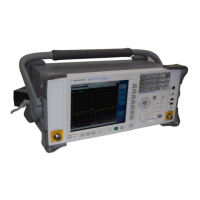
